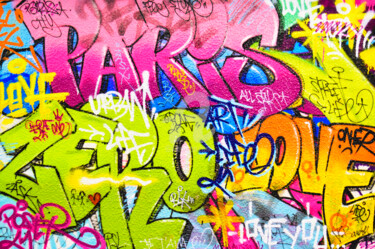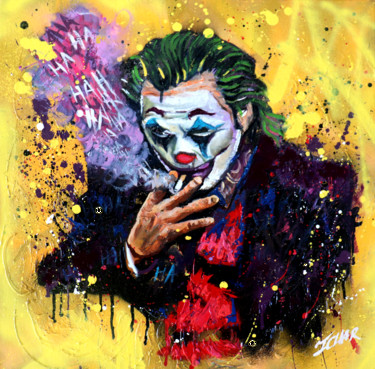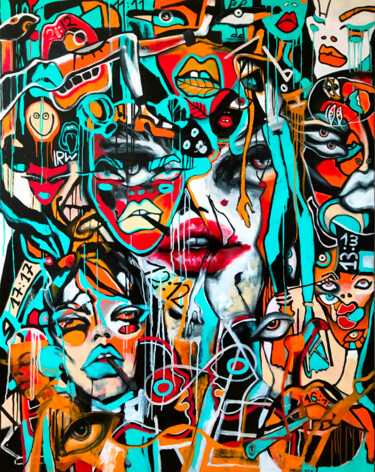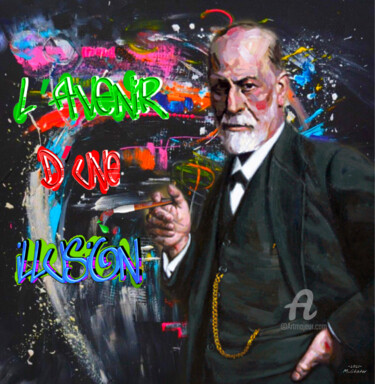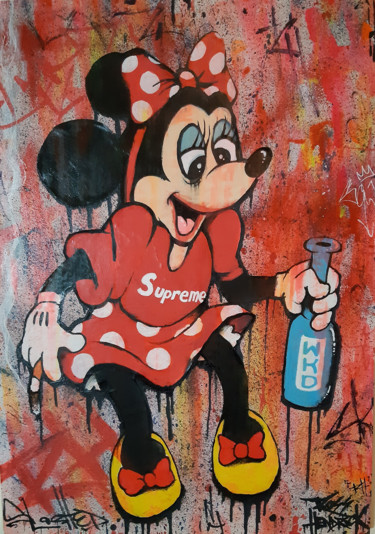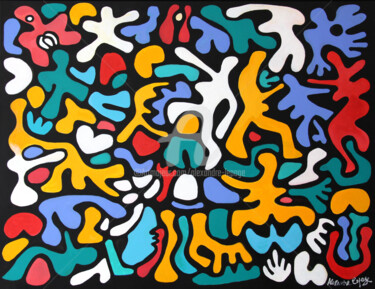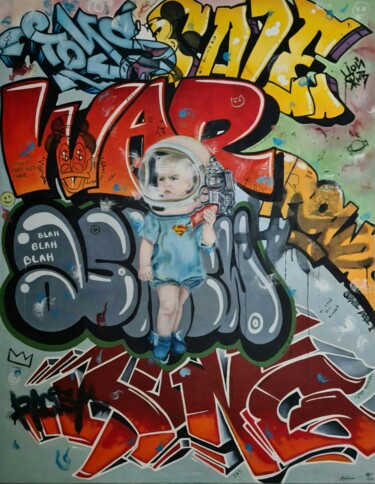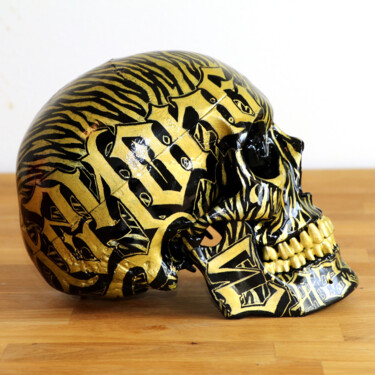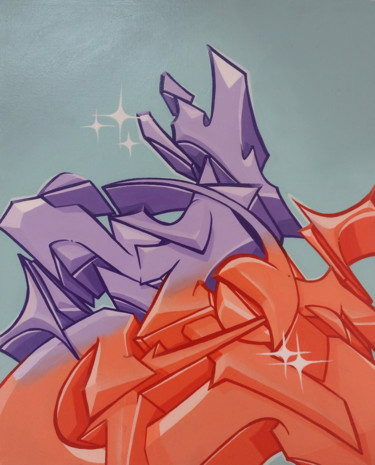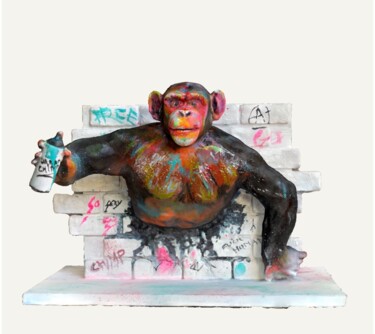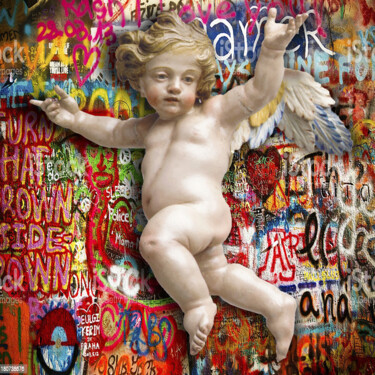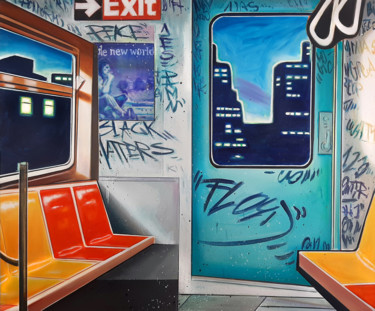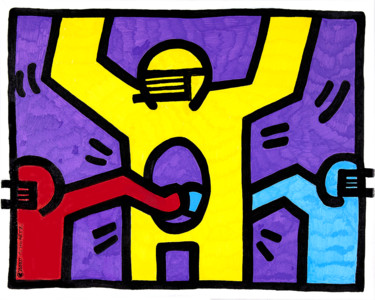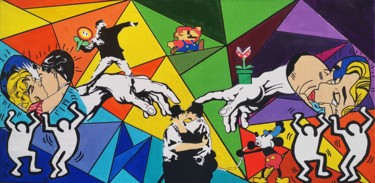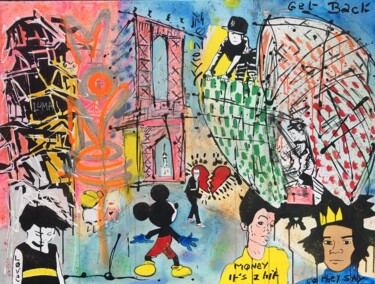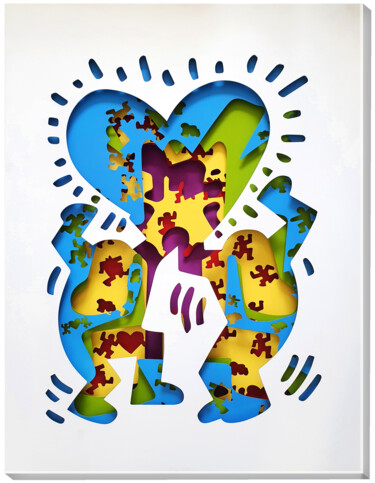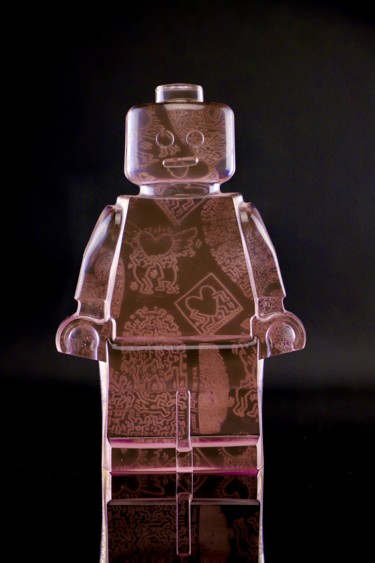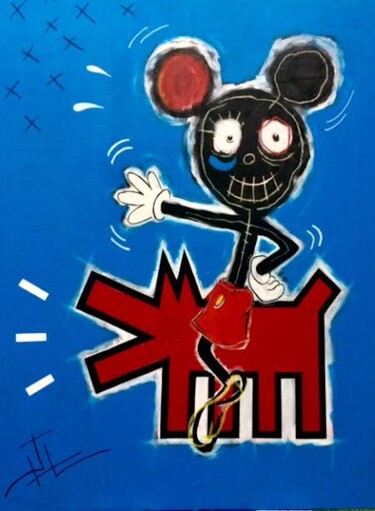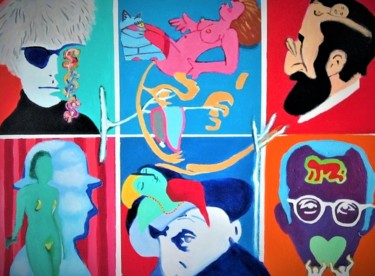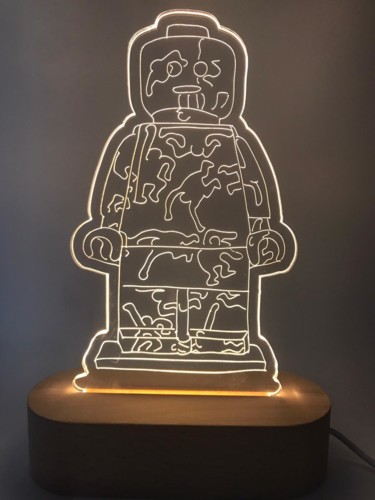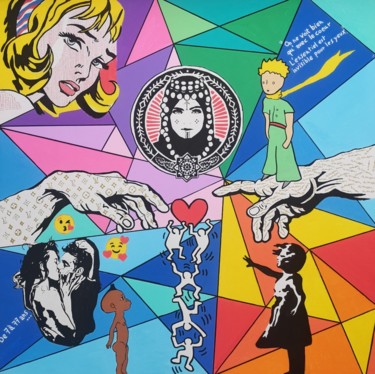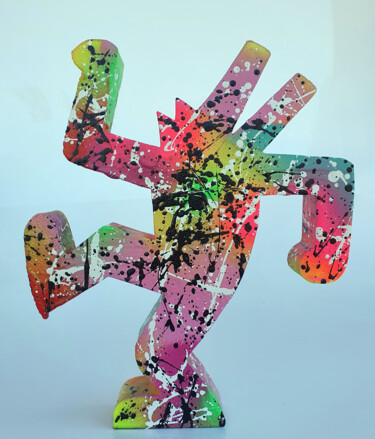Street art: the origins
Street art, considered in its early days as a crude expression of urban vandalism, realised by the most disadvantaged social classes, has become, after a long and controversial history, a form of high artistic expression, whose exponents have even come to use the visibility provided by public spaces, in order to increase their earnings and their fame, turning their work into a mainstream product. But what is the origin of this movement?
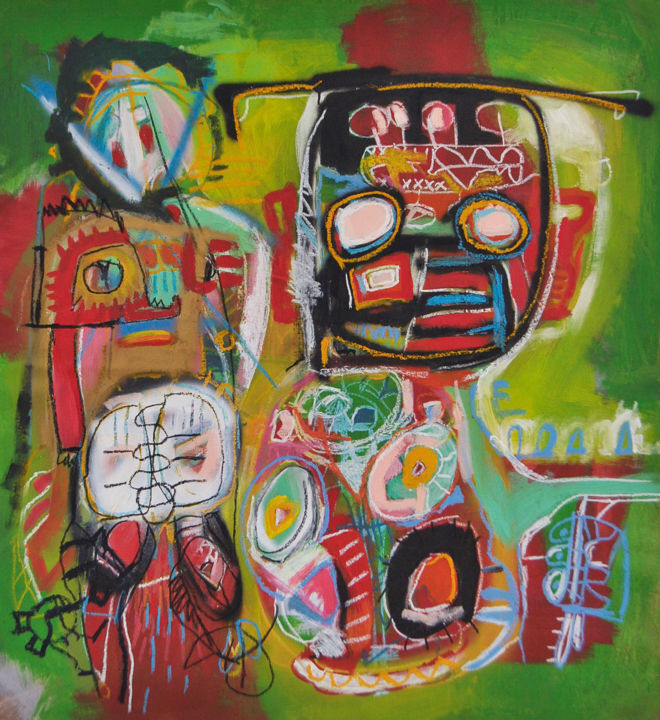 Massimo Giorgi, Angelo, 2018. Acrylic, pastel, enamel and spray paint on canvas, 100 x 100 cm.
Massimo Giorgi, Angelo, 2018. Acrylic, pastel, enamel and spray paint on canvas, 100 x 100 cm.
The development of this artistic expression dates back to the late sixties in America, more precisely in the African and Hispanic American neighborhoods of New York City, where, going hand in hand with the spread of emerging hip hop music and street subculture, the use of the spray can became widespread. The first exponents of urban art, who, making extensive use of this tool, took the name of writer, were expressed mainly through the execution of tags, graffiti and murals, techniques which in the course of the evolution of street art will be joined by others, such as stencil graffiti, wheat paste posters, reverse graffiti, stickers, mosaics, woodblocking, yarn bombing.
 Yury Korolkov, 314, 2021. Acrylic and tempera on canvas, 90 x 90 cm.
Yury Korolkov, 314, 2021. Acrylic and tempera on canvas, 90 x 90 cm.
Street art: techniques and style
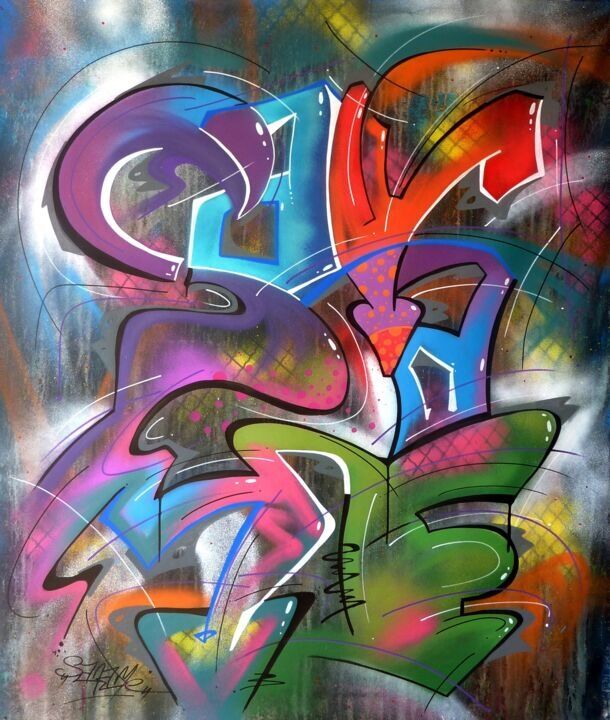 Saname, Tag n°2124, 2021. Spray paint and acrylic on canvas, 120 x 100 cm.
Saname, Tag n°2124, 2021. Spray paint and acrylic on canvas, 120 x 100 cm.
Tags and Graffiti
Analyzing in detail some of the above techniques, the term tag refers to the oldest form of street art, represented by the simple signature of the artist, which later evolved into the form of graffiti, or elaborate writings of large size, enriched by particular calligraphic styles and colors, with the purpose of decorating entire walls or subway cars. An example of a colored tag, that, finely studied and realized, is very similar to a graffiti, is offered by the work Tag n° 2124, realized by the artist of Artmajeur, Saname. The very subject of this canvas fits perfectly into the contemporary art market, which has now universally recognized Street art as a true form of artistic expression; examples of this are both Bansky's work, Submerged Phone Booth (2006), sold in 2014 by Phillips for £722,500, and the canvas, untitled, by Keith Haring, sold by Sotheby's for $4,869,000.
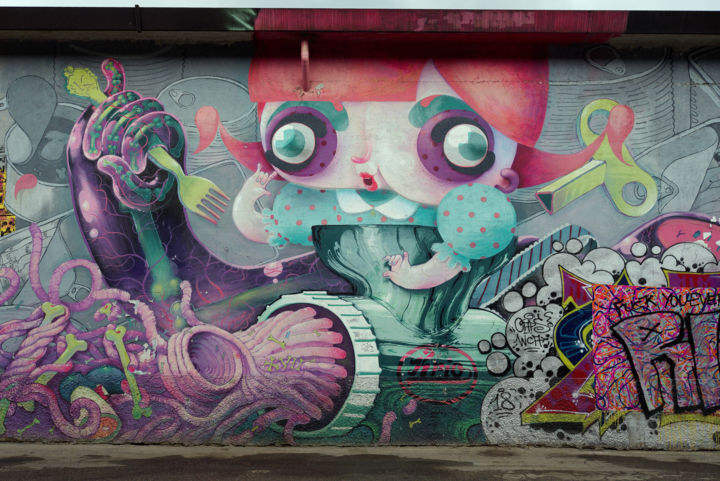 Roberto Ferrero, Ultima cena by Krio, 2019. Photography, available in different formats.
Roberto Ferrero, Ultima cena by Krio, 2019. Photography, available in different formats.
Murals
About the technique of the mural, this term indicates any type of painting done directly on large exterior walls, through a wide range of methods of execution, among which is also included the fresco. Unlike graffiti, murals are painted more accurately and less quickly, as they are legal forms of artistic expression. The growing popularity of this technique, made famous as early as the 1920s by the Mexican muralism movement, means that this type of painting has also become a popular photographic subject. In fact, the latter medium seems to have taken on the task of documenting and making tangible the works of art that adorn the walls of our cities. This purpose is well explained by the photograph taken by the artist of Artmajeur, Roberto Ferrero, who wanted to immortalize the iconic mural, depicting a disturbing little girl, located in front of the Milanese social center Leoncavallo. Work created on the occasion of the 2012 art event "Ego - Evolution Goes on!" by the "writer" Krio, a street artist who has signed walls in London, Salento (Italy), Milan and Turin, always preferring alternative spaces, compared to immaculate surfaces.
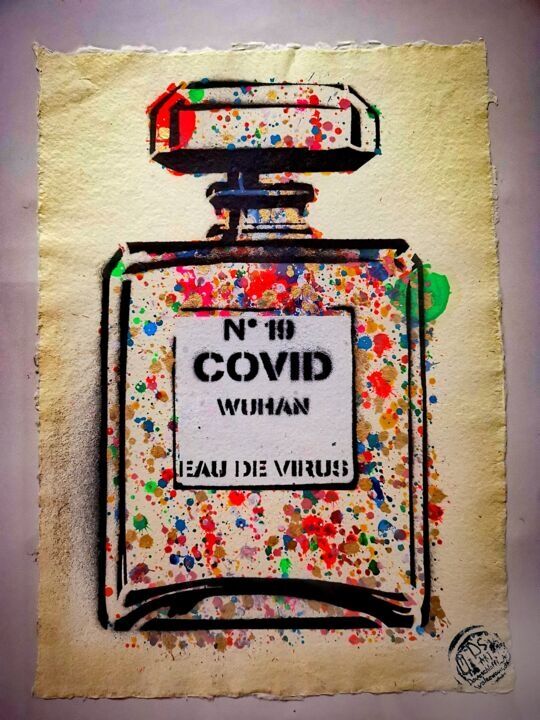 Daveschloffi, Covid n°19 edition, 2022. Stencil: spray paint on paper, 30 x 21 cm.
Daveschloffi, Covid n°19 edition, 2022. Stencil: spray paint on paper, 30 x 21 cm.
Graffiti stencils
As for the stencil graffiti, they use in a new context the traditional technique of the stencil: the writer prepares in his studio the paper or cardboard, which, once attached with adhesive tape to the chosen external support, will be traced with the spray can. This mode of execution of graffiti is the favorite of many street artists, since it allows to realize an image, or a text, easily and quickly, minimizing the possibility of clashes with the authorities. Moreover, stencils are also preferable because they are infinitely reusable and easily repeatable. As for the artists of Artmajeur, the aforementioned technique is well exemplified by the work of Daveschloffi, who picks up on the satirical attitude of the stencils of the very famous and controversial Bansky, which are often characterized by topics related to politics, culture, current events and contemporary ethics, generating a satirical and subversive art.
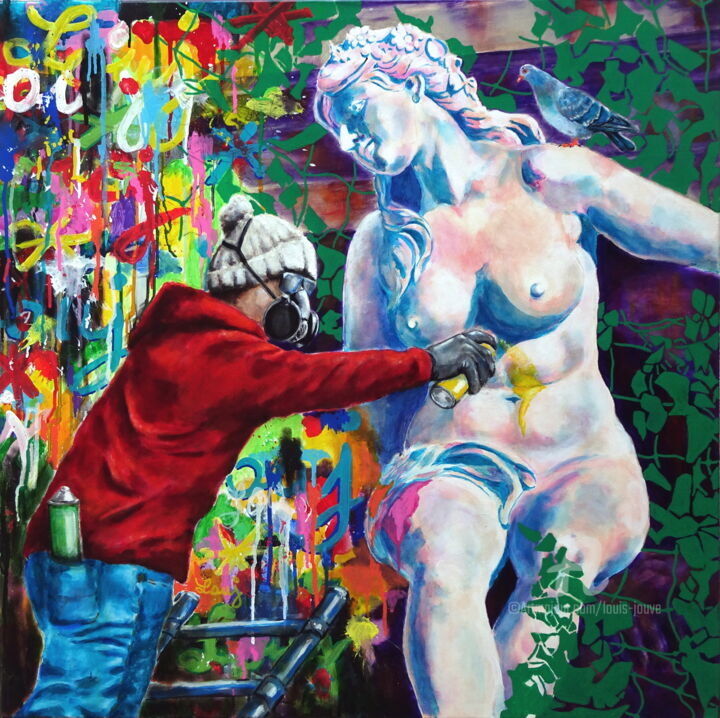 Louis Jouve, Histoire d'art, 2019. Acrylic on canvas, 80 x 80 cm.
Louis Jouve, Histoire d'art, 2019. Acrylic on canvas, 80 x 80 cm.
All these techniques are united by the same purpose: the writers wanted and want even today, to spread, through the repetition of their works, their name and their point of view, reaching as many people and places as possible. In fact, the first graffiti and tags spread strongly, as well as on the surfaces of cities, even in subway cars and trains, since the latter, traveling great distances, represented the perfect support to spread and make visible the name of the artist. These intentions were not well received by the institutions that, seeing in this mode of expression an illicit form of vandalism and an attack on public order, aimed at eliminating the phenomenon. Nevertheless, the work of the writers continued to spread even more stubbornly with the intent to carry out their message by evading the control of the authorities.
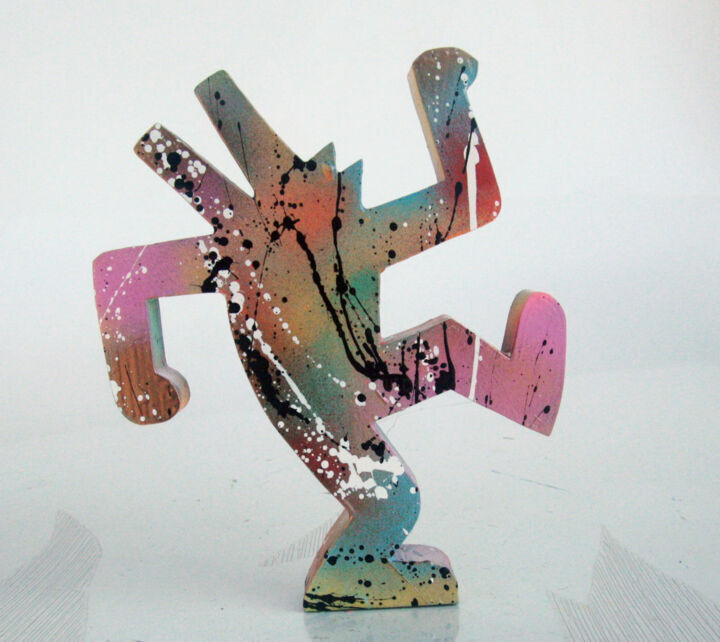 Spaco, Spaco Haring Dog Dance, 2021. Resin sculpture, 22 x 19 cm.
Spaco, Spaco Haring Dog Dance, 2021. Resin sculpture, 22 x 19 cm.
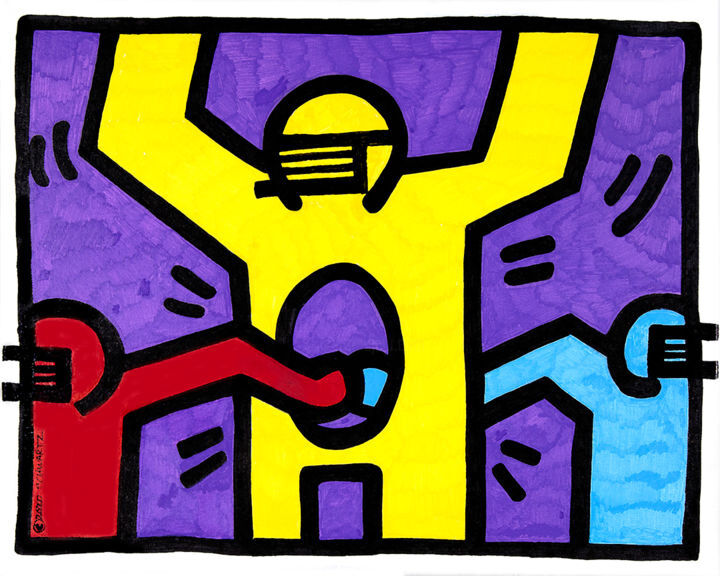 Sam Schwartz, Haring 19, 2020. Acrilico su tela, 81.3 x 101.6 cm.
Sam Schwartz, Haring 19, 2020. Acrilico su tela, 81.3 x 101.6 cm.
Keith Haring
Among these rebellious artists we also find Keith Haring, one of the fathers of American street art, who during the eighties, when he was still in his early twenties, often went down to the New York subway, where, with chalks, he enjoyed drawing on the opaque black paper of the advertising posters. In this place, the young artist often interacted with the crowds of curious passers-by, from whom he also asked advice on how to finish his works, moved by the idea that art should not be elitist, but within the reach of all. Moreover, it is important to underline how, the above mentioned creation and interaction had to be short, quick, decisive and coincidental, because Haring had to absolutely avoid being caught in the act by the police. It is in this context that his famous and unique style is defined, characterized by vibrant figures, similar to cartoons, which continues to be part of the highest tradition of street art, representing to this day a fundamental reference point for artists around the world. Among these, even the painters and sculptors of Artmajeur have often re-proposed the style and techniques of the famous exponent of Street art, mixing them with a very personal artistic research, which has resulted in unique, original and innovative works, such as, for example, the Spaco Haring Dog Dance by Spaco and Haring 19 by Sam Schwartz.


 Olimpia Gaia Martinelli
Olimpia Gaia Martinelli
